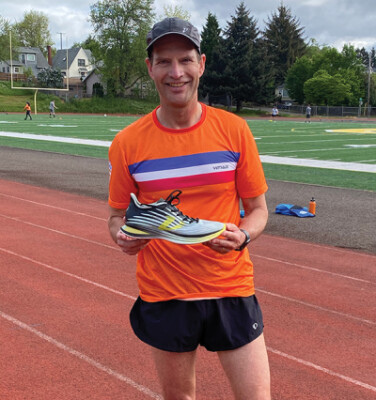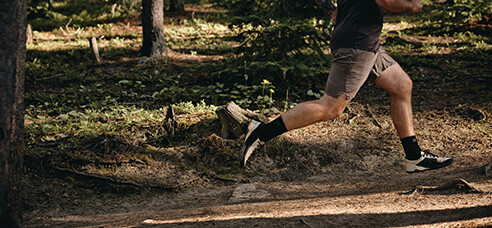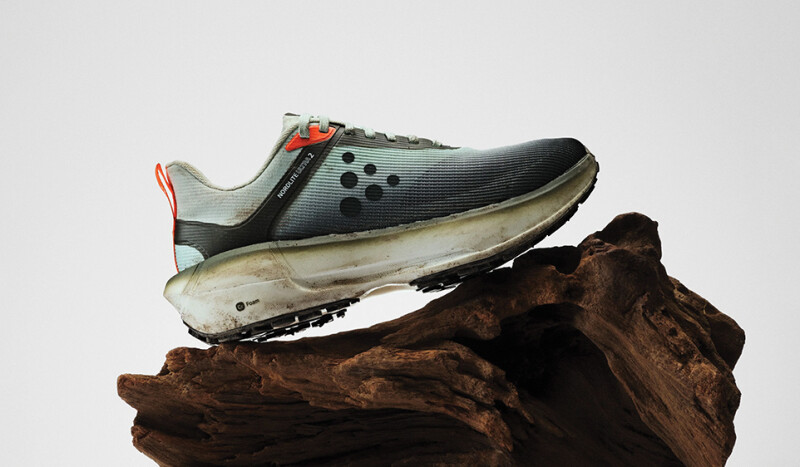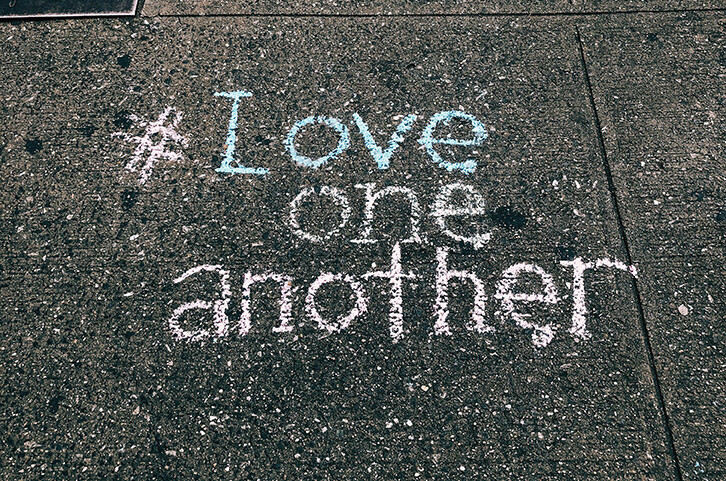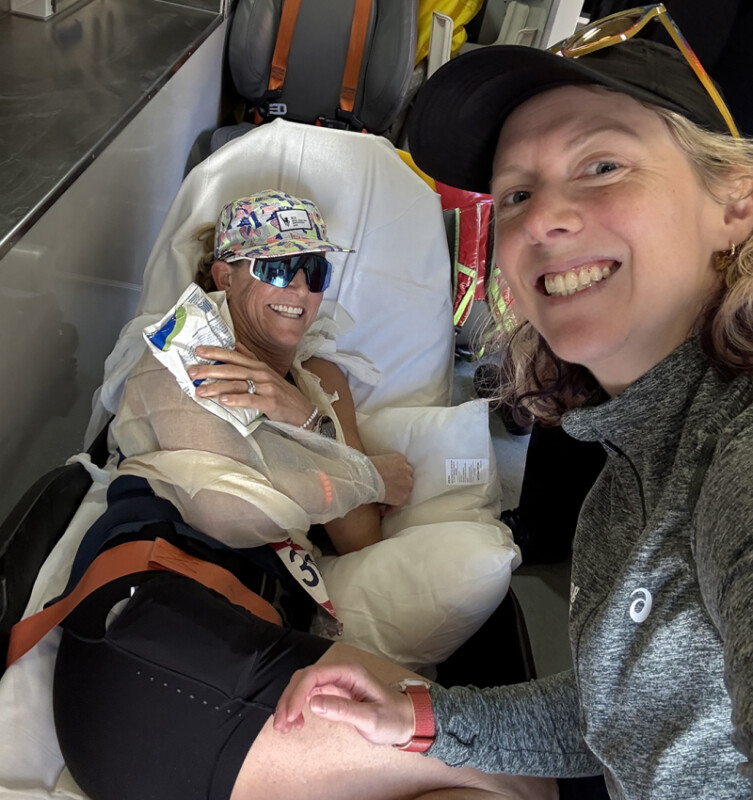Do we really need another running shoe brand? A few years before the pandemic, I thought a lot about that question, because I had an idea for how to design shoes by pace for better performance.
Starting any new brand, let alone running shoes, is risky in the best of times, because there is so much out there already. The variety of competing options is overwhelming. What could possibly compel someone who’s been in the run business for a long time, to enter the ring with the heavyweights?
Answer: A scientific discovery. It turned a tantalizing possibility into an imperative and brought together three of my primary interests.
- Physics. Back in the 1980s I was fascinated by the science of two worldly phenomena: The ozone hole and the greenhouse effect. I fancied myself an environmentalist and so I struggled through a graduate program in atmospheric fluid dynamics, thinking I could contribute to the health of the planet. (Side note: Both problems are man-made, but not related to each other.) The education left me with some skills in physics and practice in scientific research. But mostly it made me even more curious, and skeptical, about the world. I began to question everything.
- Running. My father started jogging in the early 1970s, putting in his evening mile around the neighborhood. Good for the heart. While my running was mostly around the soccer field and baseball diamond (I was much better at outsprinting my opponents than I was at throwing or kicking), I cherished the attention I got at home for running fast. And so it began.
- Shoes. Life is rarely linear or predictable. By a million random collisions in the universe, 1995 found me happily working on trail running shoes for a little startup brand named Montrail. Talk about trial by fire! Fortunately, trail running shoes were experiencing a boom and all mistakes were forgiven. Few people will remember the Montrail product flops from those days, because, well, nobody bought them. But I learned much more from the mistakes, than I did from the successes.
An Epiphany In Running
In another instance of random collisions, I had an epiphany while warming up for my 6 a.m. Tuesday track workout with my small group of high school teachers and cross-country coaches. Early morning thought: Shoes could be designed by pace for better energy efficiency. Yeah, my mind had wondered!
With a start, I realized that the forces under your feet should be related to how fast you are running. And since a shoe midsole can only react to the force positioned directly above it, I would need to figure out how the forces varied heel to toe and with pace. Not in just a general sense, but with the relevant precision that would allow me to engineer the midsole properties correctly. Thus began the deep dive into the physics of running.
You might reasonably assume that my questions had been thoroughly answered in the hundreds of scientific papers on running biomechanics and that tuning a shoe by pace wasn’t a new idea at all. I thought that may well be the case, too. So I began by applying the existing mathematical models to see how the midsole engineering might look.
However, nothing generated results that made any sense. For example, the calculations suggested that for a 68 kg (150 pound) runner, I would need a shoe thickness in the range of 20 cm (eight inches) in order to get appreciable energy return. Things were not looking good. Either energy return was going to be impossible, the mathematical models didn’t apply to running or I didn’t understand how any of this worked. Either way, I decided to dig deeper.
Time-out. There is a deeply personal story that helps explain my tenacity throughout this journey. In 2014, my 20-year-old son, Torin, died of a sudden heart failure during a 50 km cross-country ski race. It’s impossible to describe the grief. But maybe you can understand how it shattered my world outlook and everything I thought I knew about life.
The Personal Story
Things can come out of nowhere and life can be over in an instant no matter how healthy, faithful and virtuous you are. I don’t want my last thoughts in life to be how I should have had the courage to chase my dreams.
The discoveries occurred while I was looking back through data I had collected years before on foot forces and trying to understand what was going on. A detail jumped out at me that I had never noticed before Ñ the data quite clearly showed how heel strike, midfoot strike and forefoot strike were related systematically to impact measurements. With precision!
Why hadn’t I seen that before? Because nobody had ever analyzed force data with this level of granularity under the foot.
I started pulling on that thread and pretty soon the mathematical connections between foot structures and impact as well as with propulsion fell into place. I found myself staring at the solution to the very old and very important unsolved problem of what accounts for the shape, the duration and the magnitude of the forces during running. And the solution applied to any person at any speed. This is big stuff.
Even if I never make another shoe in my life, the discovery changes 50 years of thinking in biomechanics and our understanding of injuries, training and what it takes to run faster. In other words, this is a very rare first. A black swan.
Back to the ‘Why?’
Back to the original question of why I’m launching a new brand in the midst of a pandemic. I knew that the data supported my original epiphany about how the forces change with pace; I knew how to account for weight, cadence and strike pattern; and I knew it made a big difference to shoe performance.
Fast forward a couple of years during which I tested the new theory in a collaborative human trials experiment (papers in process to come out this year) and built lots of prototype shoes incorporating the math and I’m ready to debut the first Vimazi running and walking shoes that are designed according to the pace you run so you can maximize efficiency and optimize cushioning.
Just another running shoe? No, it’s much more than that. It’s a new discovery about how we run.
Vimazi means “pace zone” and the “V” logo comes from the symbol for a velocity vector. It’s a lot of math and science just to make shoes that feel great and are made for how you run. But I think it’s worth it, because every runner can get the performance benefits, not just the super humans on the podium.
We’re making Vimazi available through select specialty and online. Finding the right Vimazi is intuitive and easy. And when your tempo workout calls for a different pace than your long run or easy day, then your quiver of shoes is easy to pick, too.
Our fit, and I know a lot about engineering fit, is consistent across models. Therefore, a specialty retailer automatically has access to sell the entire line for margin, even if they only stock a couple models. Visit our temporary website to get more info; vimazirunning.com.
